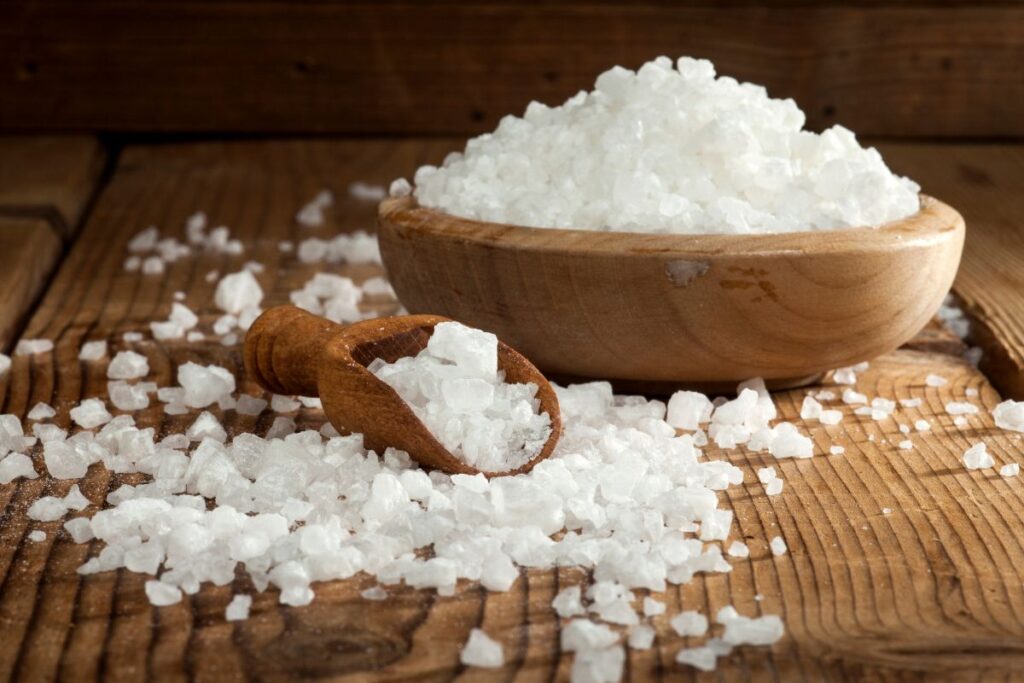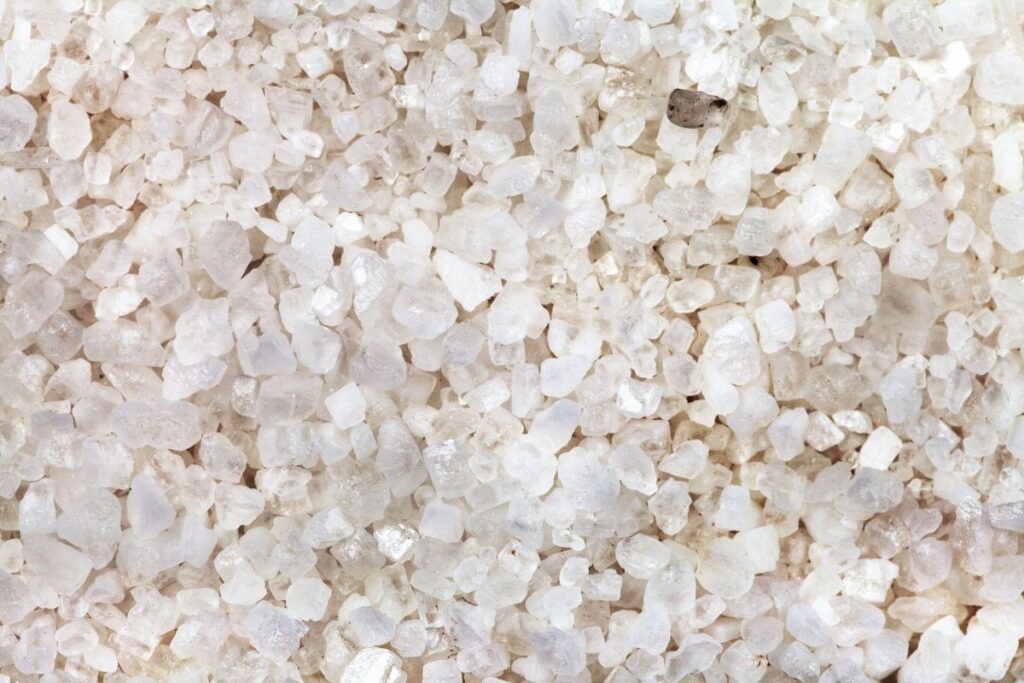Are you ready to unlock the secrets behind the tantalizing flavors of Japanese cuisine?
Prepare to dive into the world of Japanese sea salts, where a world of complexity and variety awaits.
From the traditional shio to the deep sea treasures, these salts not only enhance culinary flavors but also hold cultural significance and health benefits.
Whether you’re a passionate chef or a curious food enthusiast, understanding the nuances of these salts will revolutionize your approach to cooking and seasoning.
Get ready to embark on a journey that will elevate your taste buds and open your eyes to the wonders of Japanese sea salts.
The Art of Shio Salt
Delving into the art of Shio salt, you’ll discover it’s a meticulous process that transforms seawater into a culinary treasure. This isn’t about leaving things to chance or relying on nature’s whims. You’re in control, carefully guiding seawater through stages that concentrate its essence.
First, you’ll evaporate the water, watching attentively as it shifts from a liquid to a more potent form. This isn’t passive observation; it’s active management, ensuring the conditions are just right to preserve the unique minerals that give Shio salt its character.
Next, you’ll harvest the salt with precision, selecting only the finest crystals. Your choices here influence the final product’s flavor and texture, making it a direct reflection of your standards and skill.
Finally, you’ll dry the salt, a step where patience and attention to detail are paramount. You’ll adjust the environment to prevent clumping, preserving the delicate structure of the crystals.
Every step is an exercise in control, from selection to evaporation, harvesting to drying. When you master the art of Shio salt, you’re not just making a seasoning. You’re crafting a testament to your dedication and a tool that elevates your cooking, putting the power of nuanced flavor at your fingertips.


Sun-Dried Salt Varieties
After exploring the meticulous process of making Shio salt, let’s now focus on the varied world of sun-dried salt varieties, which offer a different spectrum of flavors and textures. You’ll find that controlling your culinary creations becomes a nuanced art when you incorporate these sun-drenched marvels.
Sun-dried salts, as the name suggests, are harvested by allowing seawater to evaporate under the sun, a method that imbues these crystals with a unique mineral composition. You’ve got the power to choose among these varieties, each bringing its own character to your dishes.
Whether it’s the subtle crunch of a finely textured salt sprinkled over fresh sashimi or the robust flavor of a coarser grain melting into a simmering stew, the choice is yours.
Moreover, the natural evaporation process ensures that each grain carries the essence of the ocean, a feature that synthetic processes can’t replicate. By opting for sun-dried salts, you’re not just seasoning your food; you’re enhancing it with the purity of nature.
Embrace the control you have over your culinary landscape. Experiment with these sun-dried varieties to discover how their distinct flavors and textures can elevate your cooking from good to unforgettable.
Deep Sea Salt Harvesting
Venturing into the depths of the ocean reveals the meticulous process of deep sea salt harvesting, a method that captures the essence of the sea’s profound mystery in every grain.
This isn’t a task for the faint-hearted; it demands precision, patience, and a profound understanding of the ocean’s rhythms. As you dive deeper into this practice, you’ll uncover the unparalleled purity and mineral richness that deep sea salts bring to the table.
You’ll control the harvesting process by selecting the precise locations, often hundreds of meters below the surface, where mineral-rich seawater is pumped to the surface. It’s here that the magic happens.
Through evaporation techniques, either solar or under controlled conditions, you’ll transform this pristine water into crystal-clear salt flakes. Each step is governed by your expertise, ensuring that only the highest quality salt reaches your table.
This isn’t just about producing salt; it’s about harnessing the ocean’s bounty with respect and precision. Deep sea salt harvesting allows you to control the purity and taste profile of the salts you use, elevating your culinary creations with a touch of the ocean’s essence.
It’s a testament to the power of combining traditional knowledge with modern techniques, all under your command.


Regional Salt Specialties
Having explored the intricate process of deep sea salt harvesting, let’s now turn our attention to the diverse world of regional salt specialties, each with its unique flavor profile and culinary applications. You’re in control, selecting the perfect salt for your dish’s needs.
First up, you’ve got the renowned Okinawan sea salt. Its mineral-rich composition adds a depth of flavor that’s unmatched, perfect for enhancing the taste of grilled meats or vegetables. You’ll notice a subtle sweetness that sets it apart from its counterparts.
Then, there’s the Hakata no Shio from Fukuoka. Known for its fine, powdery texture, it dissolves seamlessly into soups and broths, offering a balanced salinity without overshadowing the other ingredients. It’s your go-to for refining those delicate dishes.
Lastly, don’t overlook the Mossa sea salt from the Noto Peninsula. Harvested using ancient methods, this salt boasts a unique moisture content that makes it cling to food beautifully, providing a crisp finish to fried foods. It’s your secret weapon for that extra crunch.
Each of these regional salts gives you the power to elevate your culinary creations. Experiment and find which one best suits your palate and cooking style.
Culinary Uses and Benefits of Japanese Sea Salts
Exploring the culinary uses and benefits of Japanese sea salts can significantly elevate your cooking, offering unique flavors and textures to a wide array of dishes.
By mastering the art of incorporating these salts into your recipes, you’ll unlock a spectrum of taste sensations that’ll impress even the most discerning palates.
Firstly, you can use these salts to enhance the natural flavors of fresh produce. A light sprinkle over sliced tomatoes or avocados can transform the ordinary into the extraordinary.
When it comes to grilling meats or fish, Japanese sea salts can penetrate deeply, ensuring every bite is infused with a burst of flavor. You’re not just seasoning food; you’re redefining it.
Moreover, these salts don’t just elevate taste; they contribute to better health outcomes. Rich in minerals, they offer a more balanced intake compared to regular table salt. By integrating them into your diet, you’re taking control not only of your culinary creations but also of your well-being.
Conclusion
You’ve now explored the world of Japanese sea salts, from the traditional shio to exotic deep sea varieties. Each type boasts unique flavors and textures, enriching your culinary creations.
Whether you’re seasoning dishes with sun-dried salts or experimenting with regional specialties, you’re enhancing not just taste but also nutritional value. Embrace these salts in your kitchen, and you’ll elevate your cooking to a whole new level.
But perhaps you have a different perspective or experience with Japanese sea salts. Maybe you’ve found them to be overrated or have discovered alternative salts that you prefer.
We welcome your thoughts and invite you to leave a comment below to share your insights. Let’s continue the conversation and explore the diverse opinions on Japanese sea salts.
Dive into the diversity of Japanese sea salts and let your taste buds soar.




Konnichiwa! (Hello!) I'm Pat Tokuyama, a Japanese tofu cookbook author, who travels for music, food, and adventure. If you like Japanese tea, checkout some of the newestorganic japanese tea, matcha bowls and noren and more!
** Curious about the Plant Based Japanese Cooking Club? ** Learn more here!